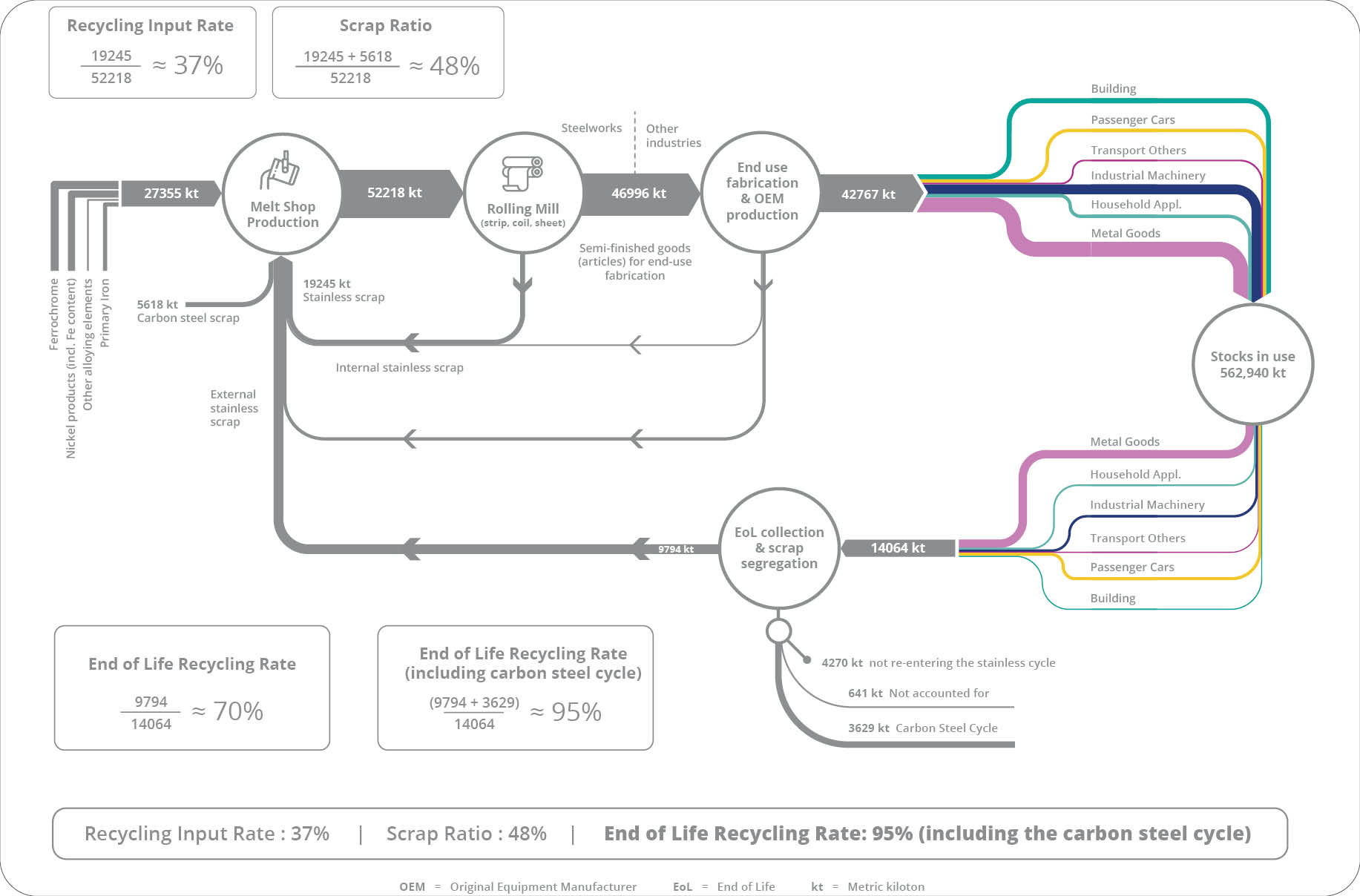The elements

The different alloying elements in stainless steel can be combined in different proportions to create a range of grades that are suitable for almost any application.
Download as a pdfMore information and interesting links on the alloying elements like carbon, chromium, nickel, molybdenum, manganese, ... and scrap.

The different alloying elements in stainless steel can be combined in different proportions to create a range of grades that are suitable for almost any application.
Download as a pdf
Video and brochures explaining how the use of (stainless) steel scrap saves billions in climate and environmental costs.
Source: BDSV
This brochure summarises the characteristics of the principal alloying elements used in stainless steels and discusses their role as alloying elements. It covers Chromium, Nickel, Molybdenum, Niobium, Titanium, Manganese, Silicon and Nitrogen.
Download the brochure here
Chromium is introduced into irons, steels and many superalloys by alloying with the intermediate product, ferrochromium. This is produced by the pyrometallurgical reduction of chromite ore with carbon and/or silicon in high temperature electric arc furnaces.
Ferrochromium is essentially an alloy of iron and chromium which may intentionally contain substantial levels of carbon and silicon.
For the video on chrome by the International Chromium Development Association - click here
For more information by the Minerals Education Coalition - click here

Nickel is a naturally-occurring metallic element with a silvery-white, shiny appearance. It is the fifth-most common element on earth and occurs extensively in the earth’s crust and core. Nickel, along with iron, is also a common element in meteorites and can even be found in small quantities in plants, animals and seawater.
For more detailed information by the Nickel Institute - click here
For the video on Nickel by the Nickel Institute - click here
For more information by the Minerals Education Coalition - click here

Molybdenum is a metallic element which is most frequently used as an alloying addition in alloy and stainless steels. Its alloying versatility is unmatched because its addition enhances strength, hardenability, weldability, toughness, elevated temperature strength and corrosion resistance.
For more detailed information by the International Molybdenum Association - click here
For more information by the Minerals Education Coalition - click here

Manganese is a chemical element with the symbol Mn and atomic number 25. Manganese makes up about 0.1% of the earth’s crust. It is the 4th most used metal on earth in terms of tonnage.
Manganese improves the strength and ductility of stainless steels.
Find out more about Manganese
Titanium when added to stainless steels stabilises welding operations and thereby avoids post welding corrosion in the weld heat affected zones. This is particularly important for specific applications and for stainless steels with higher levels of Carbon content.
Find out more about Titanium
Sulphur assists in the creation of free-machining stainless steels as it forms Manganese-Sulphide inclusions which permit increased turning, milling and drilling speeds.
Find out more about sulphur
Cobalt improves the strength of stainless steels and the resilience of the passive layer thereby enhancing the corrosion resistance further.
Find out more about cobalt
Vanadium enhances the strength, hardness and wear resistance of knives and cutting tools. It also helps to maintain the sharpness of knife blades.
Find out more about vanadium
Tungsten is added to stainless steels to enhance the material strength, toughness and corrosion resistance for high temperature applications.
Find out more about tungsten
